#ancient ostia
Text

A statue of an young girl dressed as Artemis
* Ostia Antica
* 1st century CE
* Palazzo Massimo, Rome
Rome, July 2012
#Ostia Antica#Artemis#1st century CE#Roman#girl#ancient#art#marble#statue#clothing#Palazzo Massimo#my photo
62 notes
·
View notes
Text
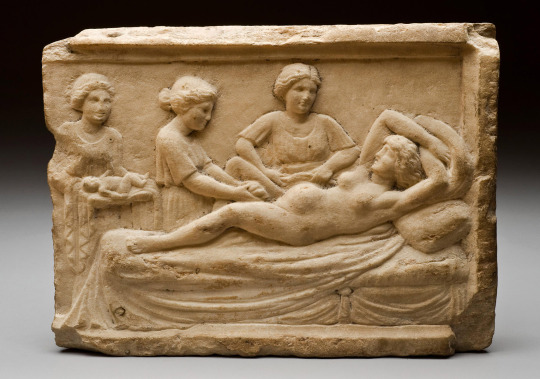
~ Relief with a parturition scene.
Date: 400 B.C.-A.D. 300
Place of origin: Ostia
Medium: Marble
Provinience: London, Science Museum
#ancient#ancient art#history#museum#archeology#ancient sculpture#ancient history#archaeology#relief#parturition#giving birth#ostia#marble#400 b.c.#a.d. 300
705 notes
·
View notes
Text

Ostia Antica - a quiet place
When I was planning my trip to Ostia Antica I browsed through several web sites and someone mentioned that it is a very quiet place. That was certainly true, it felt often that I was the only person in the area. especially when I walked away from the theatre region. A bit different experience compared to Pompeii ;)
Ostia Antica, July 2015
65 notes
·
View notes
Text

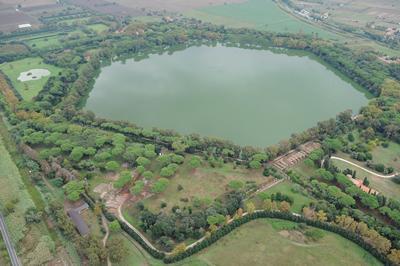
Left: Visual reconstruction of the ancient Portus in Ostia, a port in the Tiber Delta first contemplated by Julius Caesar, then built by Emperor Claudius (who didn't get to see its completion) to ensure the vital supplies of grain even in winter and later enlarged by Emperor Trajan.
Right: The modern remains of the port's basin, now several hundred meters inland.
192 notes
·
View notes
Text
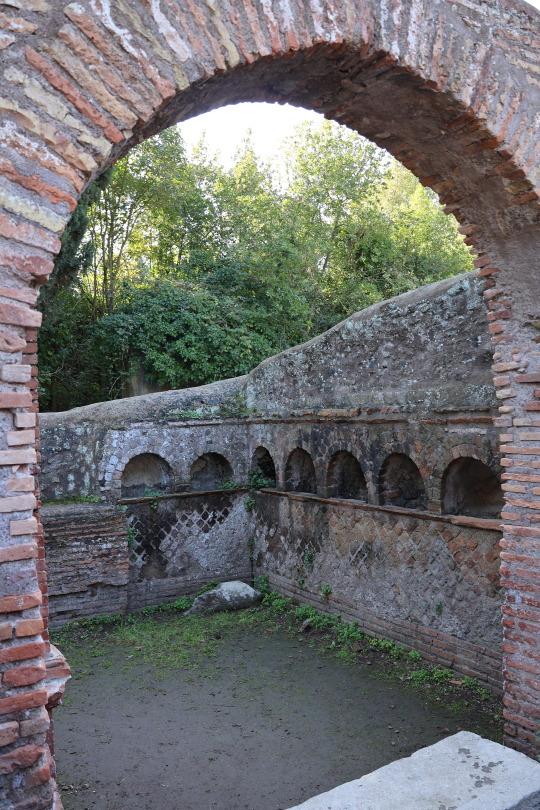
An Ancient Roman columbarium located just outside the ancient port city of Ostia Antica.
Rome, Italy
#ostia antica#italy#italia#roma#rome#ancient roman#ancient rome#columbarium#columbaria#cemetery#tomb#original photography#photography#taphophile#taphophilia#lensblr#photographers on tumblr#tombs#roman architecture#archaeology#wanderingjana
43 notes
·
View notes
Text

2,000-Year-Old Artifacts Recovered From Well in Rome
The objects, found within the Ostia Antica archaeological site in southern Italy, include burnt animal bones and a carved wooden chalice.
A trove of perfectly preserved ceramics, burnt animal bones and a wooden chalice have been pulled up from a well in Ostia Antica, shedding new light on religious life at the heart of Ancient Rome.
Discarded peach stones, oil lamps and marble fragments dating from the first and second centuries BC were also pulled up from the 3m-deep shaft at Ostia, an ancient port city at the mouth of the Tiber that is now the site of a vast archaeological park.
The well is located outside the ruins of the Temple of Hercules in the archaeological site’s so-called sacred area, once home to Ostia’s most important places of worship. Water at the bottom has preserved the artefacts for centuries.


Specialists were hoisted inside and they then carefully removed the objects. Recovered pig and cattle bones and ceramics showed burn marks, suggesting the animals had been sacrificed, cooked and eaten during banquets honouring deities. “These finds are a direct testament of the ritual activity that took place at the sanctuary,” Alessandro D’Alessio, director of the Ostia Antica archaeological park. “We might have imagined this happened but previously we had no evidence.”
One of the most spectacular discoveries was a carved wooden chalice or funnel. Archaeologists are still trying to determine its precise function. “Refined objects like this are rare given that wood usually deteriorates,” D’Alessio said. “We believe it may have been used as a musical instrument such as a pipe.”



Before Christianity was adopted as the official religion of the Roman empire in 380 AD, Romans typically fulfilled vows to multiple gods, made divine requests and asked for forgiveness by sacrificing animals in designated sacred spaces including altars and temples.
Ostia’s sacred area, which was located near a spring along the Via della Foce road that led towards the coast, was discovered in the late 1930s and is currently being restored with a view to opening it to the public.
D’Alessio said that the newly discovered objects would be restored by specialists from the archaeological park and eventually displayed at the refurbished Museo Ostiense, which is due to reopen by the end of June following a three-year closure.
Massimo Osanna, director of museums at Italy’s culture ministry, said in a statement: “Restoration work [in Ostia Antica] has proved to be a unique opportunity to study and deepen our knowledge of the functions and activities that took place in the sanctuary”.
By James Imam.

#2000-Year-Old Artifacts Recovered From Well in Rome#Ostia Antica archaeological#Ostia Antica#Temple of Hercules#ancient artifacts#archeology#archeolgst#history#history news#ancient history#ancient culture#ancient civilizations#ancient rome#roman history#roman empire#roman art#roman archaeology
50 notes
·
View notes
Text

Ruins of Ostia Antica, Rome's ancient port city.
Feb 2024
Explore:
#ostia antica#ancient rome#ancient roman#roman empire#roman architecture#ancient architecture#original photography#italy#italia#photography#travel#photographers on tumblr#lensblr#architecture#historical architecture#cityscape#urban exploration#wanderingjana
24 notes
·
View notes
Text


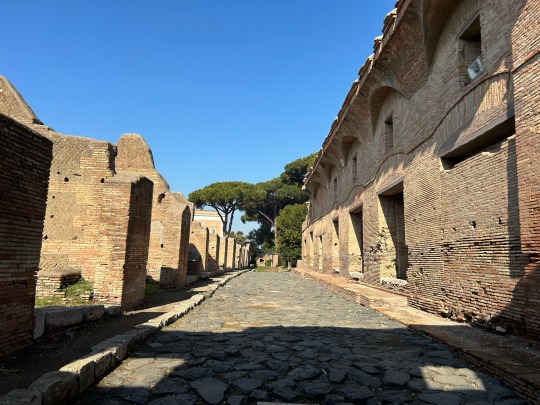


Spent four hours at Ostia Antica today. Probably could have stayed longer.
Feb 18, 2024
#ostia antica#travel#architecture#original photography#photographers on tumblr#photography#urbanexploration#archaeology#Italy#Italia#lensblr#Ancient Rome#ancient Roman#ruins#cityscape#city photography#historical architecture#wanderingjana
44 notes
·
View notes
Text

Sarcophagus of a roman nautical scene: three ships, a small boat and one man overboard ; on the right, a farewell scene. Said to be from Ostia and be the sarcophagus of a merchant captain, c. 300 AD
75 notes
·
View notes
Text


𝙊𝙎𝙏𝙄𝘼
#ostia#ancient history#architecture#archaeology#photography#photoshoot#aesthetics#art#classical art#history#italia#italian#italy#rome#ancient rome#roman empire#roman#roma#ostia antica
6 notes
·
View notes
Text
youtube
Did Roman apartment houses have a "Super" on site, or a doorman? Was parking included for your horse and wagon? What happened if your insula went condo? In this video you'll learn about Roman apartment houses, or insulae; who lived in an insula, and on what floors; the floor plan of a typical insula; and what a typical insula would have looked like.
#Rome#Roman#Ancient Rome#Ancient Roman#Insula#Insulae#Apartment#Aparment House#Condo#House#Housing#Urban Housing#High Rise#Tenant#Lease#Pompeii#Ostia#Tenement#Co-op#Family#Familia#Herculaneum#Domus#Domae#Villa#Residence#Penthouse#Poor#Poverty#Middle Class
20 notes
·
View notes
Text


Sanctuary of Attis, Ostia Antica
* photo 1: Pan and Attis; the latter was dedicated by Caius Cartilius Euplus. The statue has an inscription which reads:" To the divine majesty of Attis, Caius Cartilius Euplus, after an admonition by the goddess." (source: https://www.ostia-antica.org/regio4/1/1-3.htm)
* photo 2: Marble reliefs of Pan
* 3rd century CE
Ostia Antica, July 2015
#Ostia Antica#Sanctuary of Attis#Attis#Pan#sanctuary#ancient#Roman#art#relief#statue#3rd century CE#my photo
315 notes
·
View notes
Photo
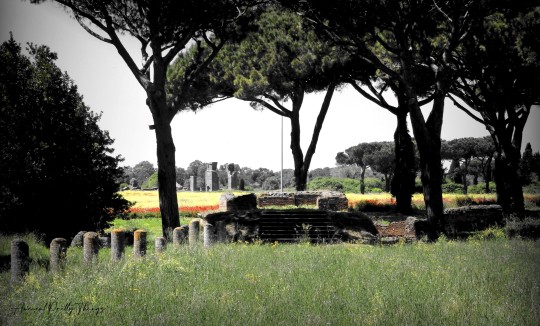
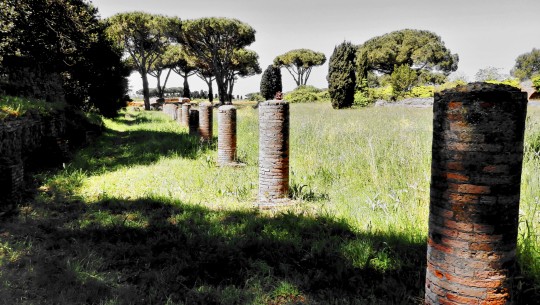
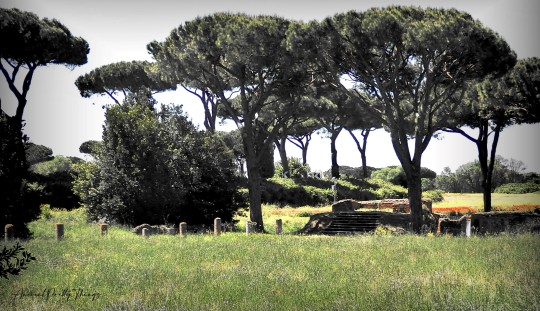
The Grand Palaestra, Ostia Antica.
#ostia#oastia antica#palaestra#grand palaestra#italy#roman#ancient roman#ancient rome#original photography#ancientprettythings
134 notes
·
View notes
Text
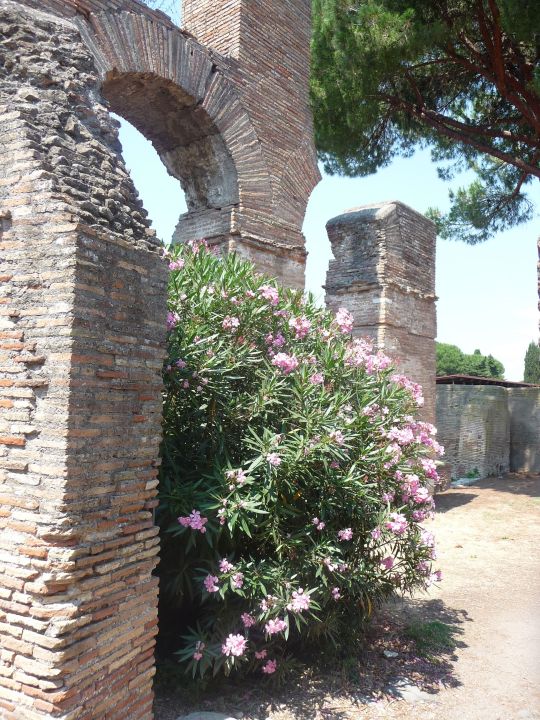
Ostia Antica
July 2015
84 notes
·
View notes
Text
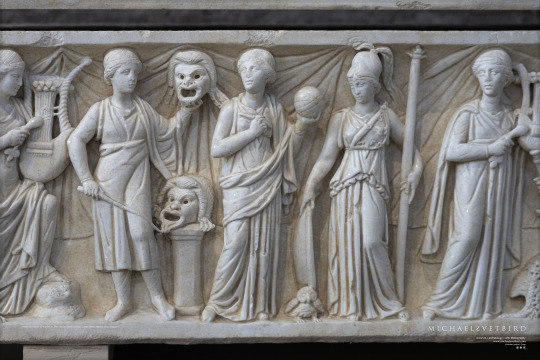





'THEATRE':
"Sarcophagus with Muses",
Roman Sarcophagus depicting Athena, Apollo and the nine Muses,
150-200 AD.
[From Isola Sacra Fiumicino, Porto necropolis near Rome, Found in 2008]
[Loan from] Museo Ostiense, Parco Archeologico di Ostia Antica | MO
• Web : https://www.ostiaantica.beniculturali.it/en/home
• FB : https://www.facebook.com/scavidiostia
• IG : @parco_archeo_ostia | @soprintendenzaspecialeroma
• X : @parcostiantica
Photographed [06|23] in Baths of Diocletian, Museo Nazionale Romano [Ground Fl., Hall I/II],
"The Instant and Eternity, Between us and the ancients" exhibition
• Web : https://museonazionaleromano.beniculturali.it/en/baths-of-diocletian
• FB : https://www.facebook.com/MNRomano
• IG : @museonazionaleromano
MO | Michael Svetbird phs©msp | 06|23 6240X4160 600 [I.-V.]
The photographed object is collection item of MO, photos are subject to copyrights.
[non commercial use | sorry for the watermarks]
Featured in Antiqvvs Magazine Summer 2023 Issue
https://www.antiqvvs-magazine.com
📸 Part of the "SARCOPHAGI:Reliefs" MSP Online Photo-gallery:
👉 D-ART:
https://www.deviantart.com/svetbird1234/gallery/69396046/sarcophagi-reliefs
👉 FB | Album:
https://www.facebook.com/media/set/?set=a.843393602695885&type=3
.
#rome#ostia#ostia antica#archaeological museum#baths of diocletian#museo nazionale romano#roman#sarcophagus#sarcophagi#reliefs#sculpture#ancient rome#ancient art#antiquity#archaeology#mythology#ancient#heritage#museology#athena#apollo#muses#μουσες#art history#antiquities#photo gallery#archaeology photography#sculpture photography#museum photography#michaelsvetbird
15 notes
·
View notes
Text
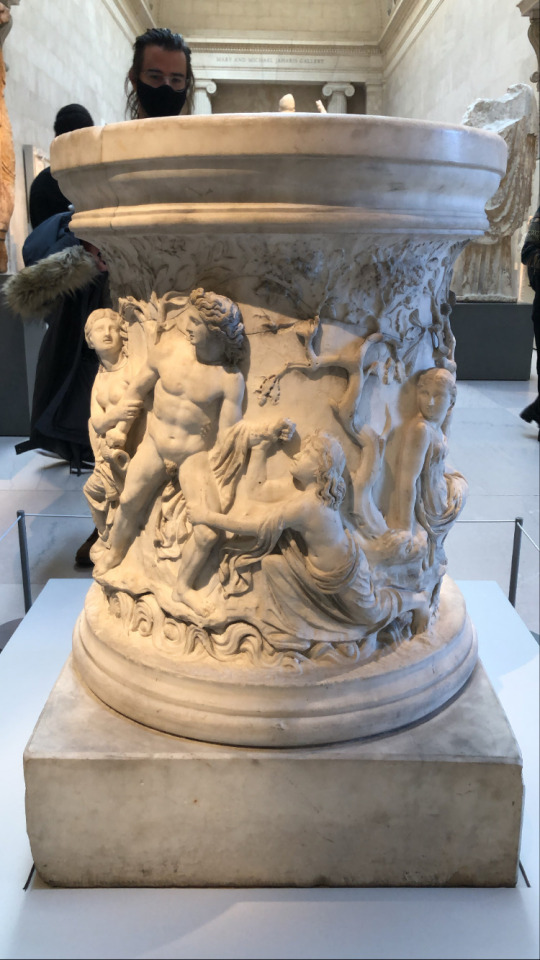
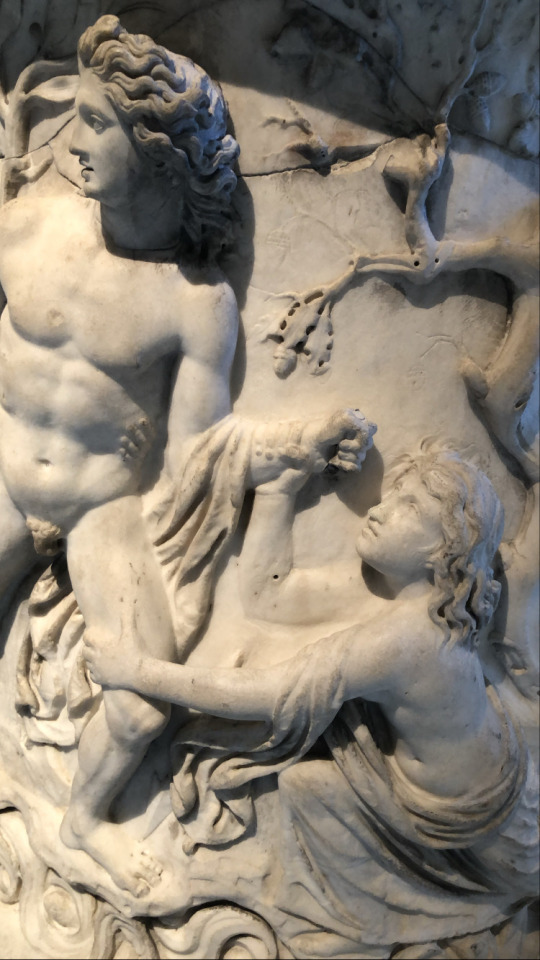
Puteal with Narcissus and Echo, and Hylas and the Nymphs.
Roman, Antonine or Severan, A.D. 150-200. Excavated in Ostia 1797, the port of Ancient Rome.
Metropolitan Museum of Art, New York.
#Roman art#Ancient Rome#ostia antica#the metropolitan museum of art#young and in love in new york city#new york#cool#art
5 notes
·
View notes